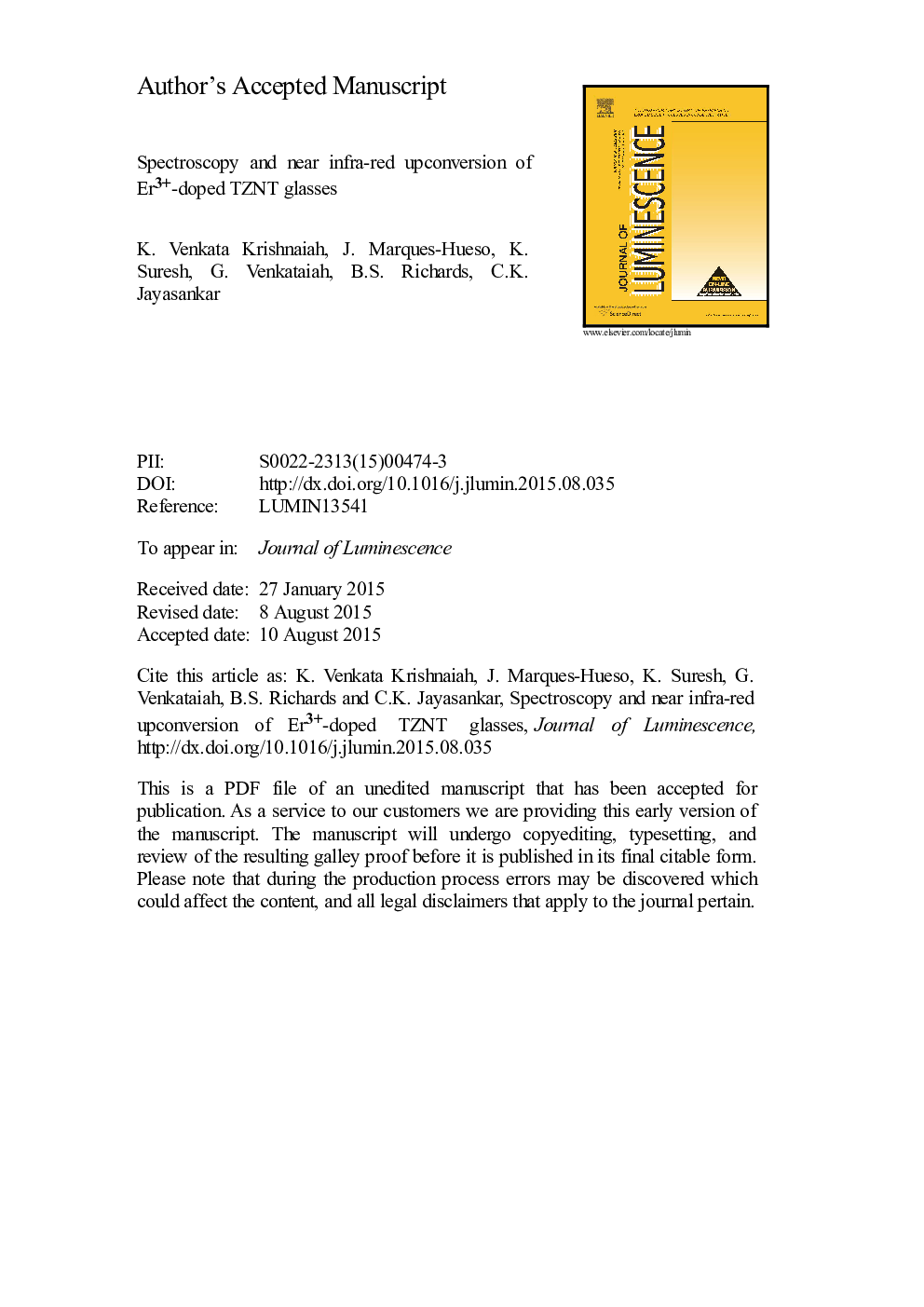| Article ID | Journal | Published Year | Pages | File Type |
|---|---|---|---|---|
| 5399243 | Journal of Luminescence | 2016 | 25 Pages |
Abstract
In this paper we report on the near infrared (NIR) upconversion (UC) and spectroscopic properties of erbium (Er3+)-doped TeO2-ZnO-Nb2O5-TiO2 (TZNT) oxide glasses. Judd-Ofelt theory has been applied to investigate the intensity parameters (Ωλ, λ=2, 4 and 6) which are used to derive radiative properties of the fluorescent levels. The different glasses present high refractive indices, low dispersion and Abbe numbers, as determined by variable angle spectroscopic ellipsometry. Under 980 nm excitation, the NIR emission profile and full width at half maximum have been studied in a broad range of Er3+ concentrations (0.01-3.0 mol%). On the other side, NIR UC has been obtained by exciting at 1523 nm, showing an increase of the intensity with Er3+ ion density in the studied range. The decay curves of the 4I13/2 level exhibit single exponential nature for all the different concentrations. The lifetime of the 4I13/2 level has been found to decrease (3.73-1.20 ms) after an initial increase (3.65-3.73 ms) with increasing of Er3+ ion concentration. The TZNT samples show broadband UC emission at 1.0 µm, which match with the band gap of silicon. This reveals that the investigated glasses could find application in photonics, for example non-linear optics and photovoltaic's.
Related Topics
Physical Sciences and Engineering
Chemistry
Physical and Theoretical Chemistry
Authors
K. Venkata Krishnaiah, J. Marques-Hueso, K. Suresh, G. Venkataiah, B.S. Richards, C.K. Jayasankar,
